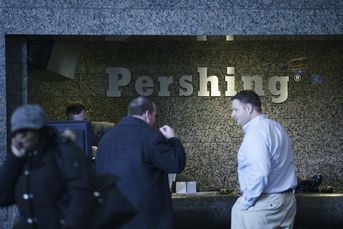Top robo-advisers Betterment and Wealthfront more weighted toward stocks than bonds, research says

Leading robos also are bracing for a market downturn, Convergex says.
Betterment and Wealthfront, the two leading independent robo-advisers, strongly focus their portfolios on equities and are underweight bonds, according to Convergex research.
Portfolio construction for two types of profiles — a 22-year-old with an average income of $50,000 and a 55-year-old with an average income of $250,000 — were both “equity-centric” as a long-term strategy, said Jessica Rabe, research associate at Convergex.
“They expect that equities will rebound from troughs,” Ms. Rabe said. “They are not about market timing.”
Robo-advisers also seem to be preparing their clients for a market downturn, the research said. The research noted that over the past 10 days, Wealthfront has sent various emails with half of the blogs and videos focused on managing clients’ expectations on future volatility.
“The risk for the robos is the next major market downturn, and the fact that they are so equity-centric makes them that much more vulnerable,” Ms. Rabe said.
Robo-advisers, for the most part, have experienced a bull market in recent stock market performance. Other analysts have cited this as an impending challenge for the online investment websites. Only in August did the robo-advisers face their first reckoning, when a market correction reminded some investors why stocks are considered a long-term investment choice.
The automated investment service providers came back after that volatility saying their clients reacted well to the decline. One platform said it was like any other day, while another said there’s no difference between the way a robo-adviser and a traditional adviser interact with investors on bad market days.
Convergex used two investor profiles and answered robo questions similarly. The firm found Betterment gave the young investor a 90/10 split between stocks and bonds and a 73/27 split for the older client. Wealthfront gave the younger investor an 82/18 split and the older investor a 65/35 split. Both robos suggested different allocations of the same exchange-traded funds, which was compared to returns of the same portfolio with a standard 60/40 allocation. Dividends were accounted for, and robos’ fees were excluded.
The research shows the 60/40 portfolio outperformed the robo-adviser. Ms. Rabe noted in her report that the firm recognizes it isn’t an exact match-up as energy exposure was likely different in the beginning of 2014.
[More: Wealthfront introduces automated bond portfolio]
A Wealthfront spokeswoman said it also wasn’t a fair comparison because her company uses mean variance optimization to determine “the ideal mix of asset classes that can be expected to generate the highest after-tax return for every level of risk.”
“We focus on after-tax returns because, unlike institutions, every individual investor must pay taxes,” she said. “Therefore only your after-tax return is relevant.”
Dan Egan, director of behavioral finance and investments at Betterment, said the robo has well-behaved clients who know not to time the market, and that major downturns like the 2008 crash don’t come around often. Betterment has been in four corrections, he said.
“That won’t be our first rodeo,” Mr. Egan said. “We’ve been through quite a few of these.”
Learn more about reprints and licensing for this article.







